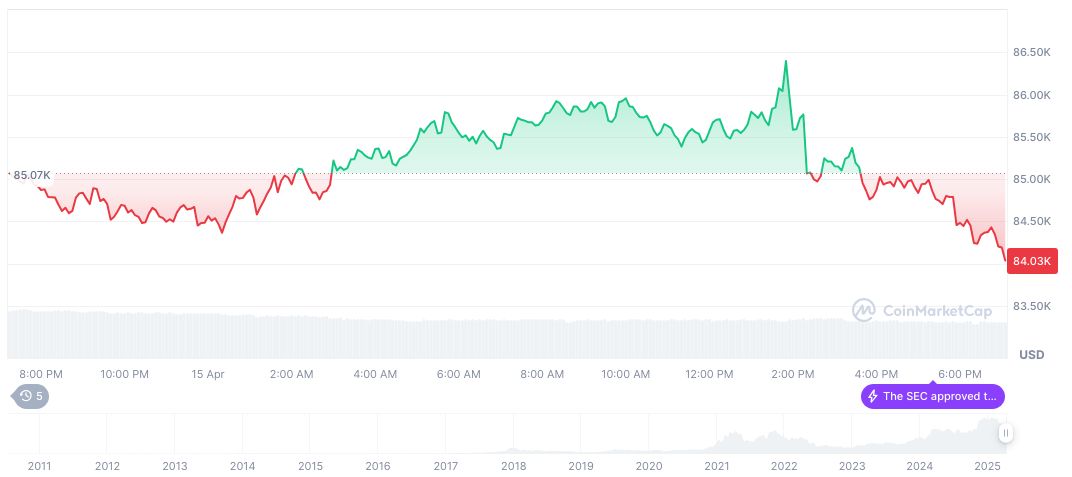- The Federal Reserve may cut interest rates if inflation eases.
- Current policies remain tight to manage inflation.
- Potential rate cuts could affect market dynamics.
Philadelphia Federal Reserve President Patrick Harker announced potential interest rate cuts if economic growth slows and inflation decreases. The statement was made amid current restrictive policies aimed at reducing inflation without causing negative impacts on the economy.
Harker’s comments reinforce the Federal Reserve’s cautious approach to monetary policy. The focus remains on data-driven decisions rather than reacting to short-term fluctuations, reflecting broader uncertainty in financial markets.
Fed’s Rate Decisions and Market Dynamics
Federal Reserve Bank of Philadelphia President Patrick Harker recently made statements regarding potential interest rate reductions if a meaningful decline in inflation occurs. Harker emphasized, “The policy rate remains restrictive enough to continue putting downward pressure on inflation over the longer term, as we need it to, while not negatively impacting the rest of the economy. The caution I am taking is to look at all the data and not be moved to act, in either direction, based on one report covering one month.” Such a decision would depend on observed economic growth and inflation levels. Current monetary policy remains restrictive enough to address inflation concerns without overly affecting other economic sectors.
Changes in market dynamics could arise if the Federal Reserve concludes that an interest rate cut is necessary. Such actions may influence borrowing costs, impact inflation trends, and reshape market expectations in the broader financial landscape. The anticipation of rate cuts has already led to fluctuations in bond futures markets, pricing in possible reductions by mid-2025.
Market analysts and key figures have focused on Harker’s statements, emphasizing the Fed’s careful observation of economic indicators. Jerome Powell, Federal Reserve Chair, noted that there is no rush in policy adjustments, aligning with Harker’s cautious stance. This approach adds to speculative market activities, particularly in volatile asset classes such as cryptocurrencies.
Historical Policy Shifts and Cryptocurrency Reactions
Did you know? The last dovish shift in U.S. monetary policy during 2020’s pandemic onset led to a historic rally in cryptocurrencies and equities.
Based on CoinMarketCap data, Bitcoin (BTC) trades at $84,767.25, with a market cap of nearly $1.68 trillion. Its 24-hour trading volume decreased by 9.49%, reflecting broader market caution. Despite a minor 0.21% dip in the last 24 hours, Bitcoin’s value maintains a 9.05% increase over the past week, indicating resilience amid economic uncertainties.
CoinCu Research indicates that traditional and digital markets may experience increased volatility if the Fed implements further rate cuts. Analysis of historical trends suggests that initial policy shifts toward easing often correlate with capital inflows into growth sectors, including major cryptocurrencies such as Bitcoin, reflecting investor optimism and speculative positioning.
Source: https://coincu.com/332575-fed-interest-rate-cuts-inflation-growth/

